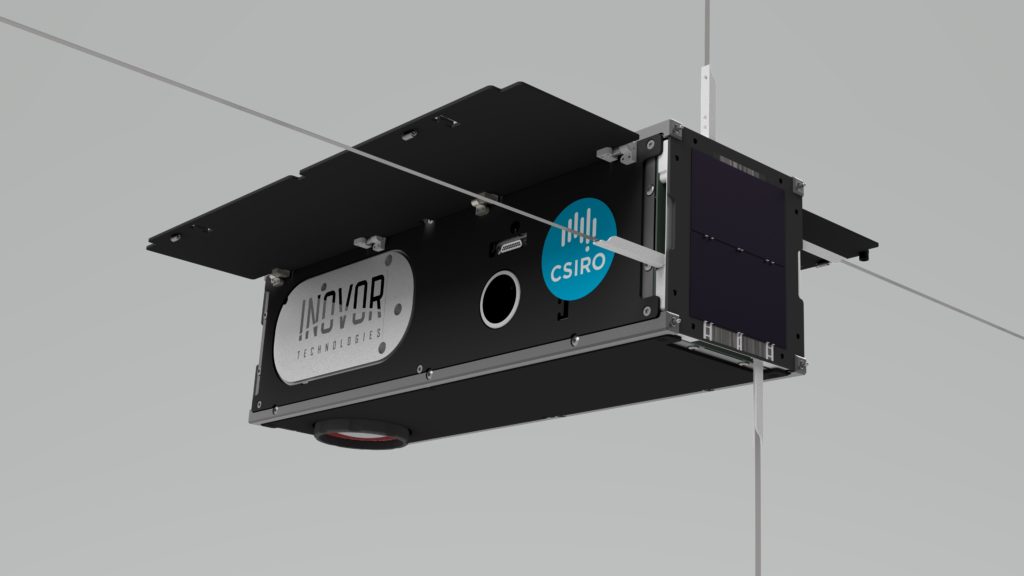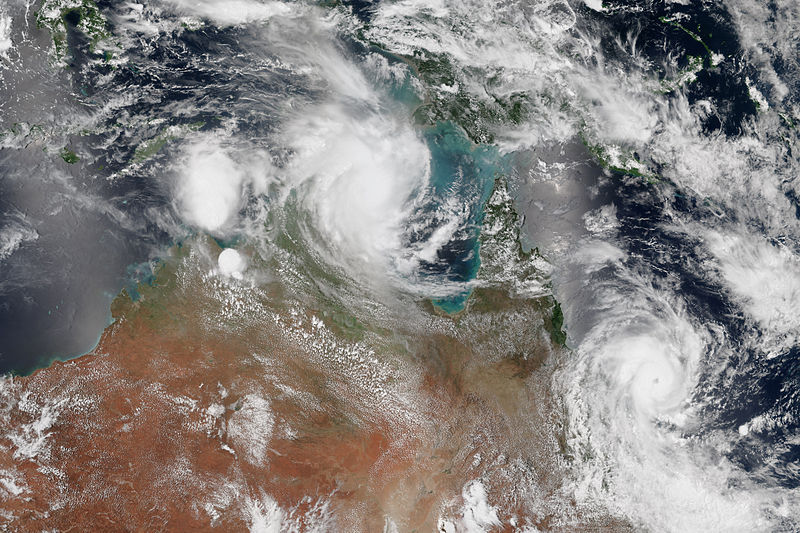
Artist Impression of CSIROSat-1 CubeSat. Credit: Inovor Technologies
What’s roughly the size of a toaster but much more useful for Earth observation? Nanosatellites – aka CubeSats.
Weighing in at just over one kilogram, CubeSats have a base size of 10cm x 10cm x 10cm. But because every scientist ever is a fan of Lego® building blocks, they’ve also made the cube base stackable so you can add expansion packs. And we’re adding a new breed of these miniature, low-cost satellites to our Earth observation capabilities.
CubeStats are often used to demonstrate new technology to test new science, new concepts and new infrastructure. A customised selection of scientific instruments carry out specific research and miniaturised electronics conduct and communicate the scientific findings.
What also makes these little cubes so versatile is that they can be grouped together into “constellations” to provide advanced mission concepts. Their size and weight also add to their appeal as they can piggy-back a ride with other larger cargo heading up to the International Space Station, where they are launched into orbit around Earth.
They generally have a short life-span – lasting about a year or two before their power components fail, and they burn up when they re-enter Earth’s atmosphere, but during their lifetime they provide a valuable science data collection. And this is where they punch well above their weight. CubeSats are rapidly evolving and pushing the research boundaries.
Their “tech demonstrator” status means they are a viable option for trialling new scientific approaches and pilot infrastructure. And just recently two CubeSats did something no other CubeSat has done before – they travelled to another planet!
In the recent InSight lander mission to Mars, two CubeSats developed by NASA accompanied the lander on its journey to the red planet. This was an amazing demonstration of their capability and potential to support the scientific exploration of interplanetary missions. It signalled a game changer for the scientific and technical scope of these low-cost, mini spacecrafts.
Eye spy with my little space eye
This week we took another step forward in expanding our stable of assets in Earth observation with the acquisition of a bespoke CubeSat with infrared sensing capability, the first of its kind in Australia.
Known as CSIROSat-1, the new satellite will allow researchers to ‘see’ features that can’t otherwise be seen using optical satellites. This will be valuable for detecting bushfires through smoke, studying cloud formation and the development of tropical cyclones and much more. CSIROSat-1 is expected to support our approach to overcoming some of the challenges in monitoring the Australian landscape such as remote locations, areas of low population density and challenging environments.

The development of our CSIROSat-1 is also a team effort – being built and assembled by South Australian space start-up Inovor Technologies. This research is supported by the Science and Industry Endowment Fund and in-kind contributions from collaboration research partners UNSW Canberra Space, Australian National University and Defence Science and Technology Group.
For Australia, and our fledgeling space industry, this technology, along with the recently launched NovaSAR satellite, will be a valuable asset to our space technology portfolio. Being an Australian designed, controlled and operated CubeSat, it will offer the advantages of an optimised data stream customised for Australian users and near-real-time data access via Australian receiving stations. Good things really do come in small packages.

